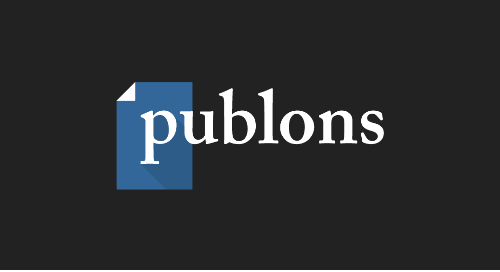building-an-inclusive-editorial-board-jcms-model-in-context
February 15, 2022
 | |
| Toni Haastrup Editor-in-Chief, Journal of Common Market Studies |
In our 2021 editor survey, one in three editors told us that their biggest challenge was ensuring that their journal was suitably diverse and representative of the community, while one in five said it was leading and engaging with the editorial board. During a recent editor webinar on the topic of effective editorial board management, we discussed strategies to build, develop, and motivate impactful boards to help you grow your journal, connect with your research community, and fulfill your mission.
In this audio clip from the webinar, Co-Editor-in-Chief Toni Haastrup shares her experience of building an inclusive editorial board.
Toni Haastrup is Senior Lecturer in International Politics at the University of Stirling, Scotland. Her work draws on critical feminisms to understand the security practices of regional actors like the European Union and African Union. She is a teacher and occasional media commentator.
Editor Engagement Team · Building an Inclusive Editorial Board: JCMS Model in Context
Transcript:
So, when I talk about editorial boards, I think often editorial board or that terminology is often used with regards to core editorial team, but also a larger board that is not a part of the day-to-day. We've got Editors-in-Chief, which is myself and Richard Whitman, and then we've got four other co-editors, but we reconstituted that adding new people to create an International Advisory Board. So, when I'm talking about editorial boards here, I'm talking about both the core editorial team, which has a, , a kind of light hierarchy as well as the Advisory Board and I'll try to distinguish between them as I go on.
I think editorial boards, both in terms of the core team as well as the advisory team are very important to a journal’s success. For my purpose, I focus on inclusion and why inclusion matters in editorial boards, so that's what I'll focus on, but I think one of the reasons why we take who's on the board seriously, is because I think the board has to reflect what the values of the journal is.
One of the things that we have to decide at the beginning of our term and in collaboration with both our professional association but also the Wiley team, is , where do we want this journal to go, what is our strategy? This is a European, seemingly a European studies journal but it’s not just a European Studies Journal, it focuses on areas of comparative politics and different regions. It integrates a variety of subject areas such as sociology, international relations, obviously political science, but also law.
And it was up to us to review what's been published in, at that time, about 55 years to see whether these different disciplines that we say that we're servicing are actually being reflected in the ways in which the journal is evolving, as well as the ways in which the journal perhaps contributes to an evolution and developments of these different fields.
So, there is an initial commitment that when we are thinking about equality and inclusion, we're thinking about the range of subject areas. And when we think about the range of subject areas, we think different theoretical methodological approaches.
But in terms of the equality and diversity, we're also thinking about the people, the people who are represented in these boards. And so, when we took over JCMS, one of the first things we did is, though we reconstituted what the leadership hierarchy is. We moved from a model of two editors to a model of six, where you have two Editors-in-Chief, which is myself and Richard, based in one institution and four other co-editors located globally, so we've got two editors in North America, one in Canada and in the United States and one in Australasia, in New Zealand specifically, and one editor in Africa.
We felt that this reflected again that idea of different range of subjects. So, we have people who covered the different areas that we say we're going to cover, and importantly moving away from simply the EU as the ideal of the common market to reflect the different regionalisms we thought it was really important then that our different editors are situated around the world.
In the context of this then, we also then had a gender balance in terms of that core editorial team.
Right, so I've been talking about our core editorial team, we’re the main liaison between what happens in the everyday of the journal with the publisher, with the professional association.
The relationship then between ourselves and those co-editors is quite close, so we're usually in regular correspondence, but they also serve different functions, so they serve to adjudicate and mediate where you might have decisions where someone says accept and someone says absolutely reject. And you can see why both are coming from different perspectives and you go to a third and a fourth. And you don't want to do that, because then you delay the decision-making process, which I think is again really important in this business, right? So, our co-editors serve that function in addition to advising us about appropriate reviewers, but also taking manuscripts from submission to review themselves. We meet in person once a year, but then try to do virtual meetings, as well as regular email correspondence. Now this was always the case even before COVID, because of where everyone is located and time difference, so we always just chose a particular conference that we're all going to where we would congregate.
Of course, that's also being sped up, the use of technology with other meeting has been sped up by Covid and I would say we probably do still do more emails than even video virtual conferencing, although we use that as well.
At the time that we took over JCMS, our Advisory Board was not very diverse at all. It was mostly white men based in North America, the UK, with some membership in Germany, France, and one member in China. This did not reflect the evolution of our journal, and in fact what we've noticed is that it seems that the, what is often called the editorial board or the Advisory Board, hadn't really been touched in a lot of years. And the thing that we realized while we were doing this job is that it's not actually that easy to change an editorial board if the status quo is more or less working fine. Just because there are a lot of other things that you have to deal with when you're editing a journal.
But in line with the commitments that we made around equality and diversity, we thought it's really important to think through how our Advisory Board can be more inclusive in a way that enhances the journal based on the strategic vision that was decided between ourselves, the professional association, and the publisher.
In that way we then retooled what the expectation is of an Advisory Board member, delineating what the, in a way, ‘terms and conditions of membership’ in this Advisory Board entailed. Which meant, of course, that they had essential roles in reviewing. We promised not to overburden them, so as rates of journal manuscript submission increased, it meant that we asked them to commit to possibility of reviewing three times a year over the usual two. We hardly ever went to that on any of our Advisory Board members, but it was really useful to have that as a backup, especially if those people who are, , reviewers often are just doing a favor are not able to complete the task, or we're not finding people in time, in the time that we've allotted.
They're also committed to giving advice on promoting the journal, and previously there wasn't really a mechanism through which this could happen, so by engaging with the board in this terms, , we have an open door. We try to meet also at conferences, but also we started creating an annual report for the Advisory Board so that they can feed into and comment on things that they think we could do better. And I think finally importantly, keeping those lines of communication open wherever we can have them.
But there are challenges, I think in inclusion and good offices within the advisory editorial board roles, and this is kind of where I want to end.
First of all, if the bulk of the work that the Advisory Board is doing is around participation in reviewing, this is also dependent on their existing workloads, so as much as we ask them to commit to doing this work, it is not always the case that they're able to do that. And although we track the data around, who we've asked and who's actually reviewed, it's become more difficult I would say in the last two years, because , COVID has thrown a wrench in everybody’s plans and you can't really hold grudge onto someone if they're just not able to do it. But of course, this then has a knock-on impact on having reviewers to actually do the job for the journal.
The second issue has to do with something called legacy. So, we spent a lot of time using, trying to find the right language to , say, look you don't want an overcrowded Advisory Board because it becomes unwieldy, and you can't really manage it. And it's not, then you can't really chart what it is that they're doing for the journal at the same time, in order for new blood to be infused into the Advisory Board, you kind of need certain people to move on, but I think we've managed it quite well. And, we were finally in a place where we were able to get a completely new team, where we were able to draw from expertise globally.
And finally, and I think this is perhaps a bit personal to my circumstance, when we started the journal in terms of the history of the journal and just the cohort that the journal belongs in, perhaps it took a lot of patience to navigate power hierarchies - those people who are quite settled in their role in the Advisory Board, not because they're doing anything particularly for it, but , they become very attached, they become quite past dependent in their relationship with the journal. And trying to navigate that power hierarchy to ensure that they actually work for you continues to be a challenge. And I know that it's not just us, but I just want to say that I think it is important that as long as you tie in the vision of the editorial team, which obviously includes the support of the publisher and the professional association, it does make life a bit easier when you're insisting that certain things have to be done for the benefit of the journal, rather than individually.









